Examples of Prequantum Field Theories II: Higher Gauge Fields
Show Complete Series
Part 1: Higher Prequantum Geometry I: The Need for Prequantum Geometry
Part 2: Higher Prequantum Geometry II: The Principle of Extremal Action – Comonadically
Part 3: Higher Prequantum Geometry III: The Global Action Functional — Cohomologically
Part 4: Higher Prequantum Geometry IV: The Covariant Phase Space – Transgressively
Part 5: Higher Prequantum Geometry V: The Local Observables – Lie Theoretically
Part 6: Examples of Prequantum Field Theories I: Gauge Fields
Part 7: Examples of Prequantum Field Theories II: Higher Gauge Fields
Part 8: Examples of Prequantum Field Theories III: Chern-Simons-type Theories
Part 9: Examples of Prequantum Field Theories IV: Wess-Zumino-Witten-type Theories
Part 10: Introduction to Perturbative Quantum Field Theory
After having recalled ordinary gauge fields from a dg-algebraic perspective in the previous article, here I discuss how in these terms we easily get the concept of higher (nonabelian) gauge fields, i.e. of gauge fields whose “vector potential” is not just a 1-form but involves differential forms of higher degree. These will be the fields of the prequantum Chern-Simons type fields theories to be discussed in the next article.
Ordinary gauge fields are characterized by the property that there are no non-trivial gauge-of-gauge transformations, equivalently that their BRST complexes contain no higher-order ghosts. Mathematically, it is natural to generalize beyond this case to higher gauge fields, which do have non-trivial higher gauge transformations.
The simplest example is a “2-form field” (B-field), generalizing the “vector potential” 1-form ##A## of the electromagnetic field. Where such a 1-form has gauge transformations given by 0-forms (functions) ##\kappa## via $$A \stackrel{\kappa}{\longrightarrow} A’ = A +d\kappa\,,$$ a 2-form ##B## has gauge transformations given by 1-forms ##\rho_1##, which themselves then have gauge-of-gauge-transformations given by 0-forms ##\rho_0##:
Next a “3-form field” (C-field’) has third order gauge transformations:
Similarly “##n##-form fields” have order-##n## gauge-of-gauge transformations and hence have order-##n## ghost-of-ghosts in their BRST complexes.
Higher gauge fields have not been experimentally observed, to date, as fundamental fields of nature, but they appear by necessity and ubiquitously in higher-dimensional supergravity and in the hypothetical physics of strings and ##p##-branes. The higher differential geometry which we develop is to a large extent motivated by making precise and tractable the global structure of higher gauge fields in string and M-theory.
Generally, higher gauge fields are part of mathematical physics just as the Ising model and ##\phi^4##-theory are, and as such, they do serve to illuminate the structure of experimentally verified physics.
For instance, the Einstein equations of motion for ordinary (bosonic) general relativity on 11-dimensional spacetimes are equivalent to the full super-torsion constraint in 11-dimensional supergravity with its 3-form higher gauge field [CandielloLechner 93]. From this point of view, one may regard the 3-form higher gauge field in supergravity, together with the gravitino, as auxiliary fields that serve to present Einstein’s equations for the graviton in a particularly neat mathematical way.
We now use the above dg-algebraic formulation of ordinary gauge fields from the previous article in order to give a quick but accurate idea of the mathematical structure of higher gauge fields.
Above we saw that (finite-dimensional) Lie algebras are equivalently the formal duals of those differential graded-commutative algebras whose underlying graded commutative algebra is freely generated from a (finite-dimensional) vector space over the ground field. From this perspective, there are two evident generalizations to be considered: we may take the underlying vector space to already have contributions in higher degrees itself, and we may pass from vector spaces, being modules over the ground field ##\mathbb{R}##, to (finite rank) projective modules over an algebra of smooth functions on a smooth manifold.
Hence we say that an ##L_\infty##-algebroid (of finite type) is a smooth manifold ##X## equipped with a ##\mathbb{N}##-graded vector bundle (degreewise of finite rank), whose smooth sections hence form an ##\mathbb{N}##-graded projective ##C^\infty(X)##-module ##\mathfrak{a}_\bullet##, and equipped with an ##\mathbb{R}##-linear differential ##d_{\mathrm{CE}}## on the Grassmann algebra of the ##C^\infty(X)##-dual ##\mathfrak{a}^\ast## modules
$$
\mathrm{CE}(\mathfrak{a})
:=
\left(
\wedge^\bullet_{C^\infty(X)}(\mathfrak{a}^\ast),
\;
d_{\mathrm{CE}(\mathfrak{a})}
\right)
\,.
$$
Accordingly, a homomorphism of ##L_\infty##-algebroids we take to be a dg-algebra homomorphism (over ##\mathbb{R}##) of their CE-algebras going the other way around. Hence the category of ##L_\infty##-algebroids is the full subcategory of the opposite of that of differential graded-commutative algebras over ##\mathbb{R}## on those whose underlying graded-commutative algebra is free on graded locally free projective ##C^\infty(X)##-modules:
$$
L_\infty\mathrm{Algbd}
\hookrightarrow
\mathrm{dgcAlg}^\mathrm{op}
\,.
$$
We say we have a Lie n-algebroid when ##\mathfrak{a}_\bullet## is concentrated in the lowest ##n##-degrees. Here are some important examples of ##L_\infty##-algebroids:
When the base space is the point, ##X = \ast##, and ##\mathfrak{a} ## is concentrated in degree 0, then
we recover Lie algebras. Generally, when the base space is the point, then the ##\mathbb{N}##-graded module ##\mathfrak{a}##
is just an ##\mathbb{N}##-graded vector space ##\mathfrak{g}##. We write ##\mathfrak{a} = \mathbf{B}\mathfrak{g}## to indicate this, and then ##\mathfrak{g}## is an L-infinity algebra. When in addition ##\mathfrak{g}## is concentrated in the lowest ##n## degrees, then these are also called Lie n-algebras. With no constraint on the grading but assuming that the differential sends single generators always to sums of wedge products of at most two generators, then we get dg-Lie algebras.
The Weil algebra of a Lie algebra ##\mathfrak{g}## hence exhibits a Lie 2-algebra. We may think of this as the Lie 2-algebra
##\mathrm{inn}(\mathfrak{g})## of inner derivations of ##\mathfrak{g}##. By the above discussion, it is suggestive to write ##\mathbf{E}\mathfrak{g}## for this Lie 2-algebra, hence
$$
\mathrm{W}(\mathbf{B}\mathfrak{g}) = \mathrm{CE}(\mathbf{B}\mathbf{E}\mathfrak{g})
\,.
$$
If ##\mathfrak{g} = \mathbb{R}[n]## is concentrated in degree ##p## on the real line (so that the CE-differential is necessarily trivial), then we speak of the line Lie (p+1)-algebra ##\mathbf{B}^p \mathbb{R}##, which as an ##L_\infty##-algebroid over the point is to be denoted
$$
\mathbf{B}\mathbf{B}^{p}\mathbb{R} = \mathbf{B}^{p+1}\mathbb{R}
\,.
$$
All this goes through verbatim, up to additional signs, with all vector spaces generalized to super-vector spaces. The Chevalley-Eilenberg algebras of the resulting super L-infinity algebras are known in parts of the supergravity literature
“FDA“s. This had been the topic of the previous articles Homotopy Lie n-algebras in supergravity and Emergence from the superpoint.
Passing now to ##L_\infty##-algebroids over non-trivial base spaces, first of all, every smooth manifold ##X## may be regarded as the ##L_\infty##-algebroid over ##X##, these are the Lie 0-algebroids. We just write ##\mathfrak{a} = X## when the context is clear.
For the tangent bundle ##T X## over ##X## then the graded algebra of its dual sections is the wedge product algebra of differential forms,
##\mathrm{CE}(T X ) = \Omega^\bullet(X)## and hence the de Rham differential makes ##\wedge^\bullet \Gamma(T^\ast X)## into a dgc-algebra and hence makes ##T X## into a Lie algebroid. This is called the tangent Lie algebroid of ##X##. We usually write ##\mathfrak{a} = TX## for the tangent Lie algebroid (trusting that context makes it clear that we do not mean the Lie 0-algebroid over the underlying manifold of the tangent bundle itself). In particular this means that for any other ##L_\infty##-algebroid ##\mathfrak{a}## then flat ##\mathfrak{a}##-valued differential forms on some smooth manifold ##\Sigma## are equivalently homomorphisms of ##L_\infty##-algebroids like so:
$$
\Omega_{\mathrm{flat}}(\Sigma,\mathfrak{a})
\;\;=\;\;
\left\{
\; T \Sigma \longrightarrow \mathfrak{a}\;
\right\}
\,.
$$
In particular ordinary closed differential forms of degree ##n## are equivalently flat ##\mathbf{B}^n\mathbb{R}##-valued differential forms:
$$
\Omega^n_{\mathrm{cl}}(\Sigma)
\;\; \simeq \;\;
\left\{
\; T \Sigma \longrightarrow \mathbf{B}^n \mathbb{R}\;
\right\}
\,.
$$
More generally, for ##\mathfrak{a}## any ##L_\infty##-algebroid over some base manifold ##X##, then we have its Weil dgc-algebra
$$
\mathrm{W}(\mathfrak{a})
:=
\left(
\wedge^\bullet_{C^\infty(X)}( \mathfrak{a}^\ast \oplus \Gamma(T^\ast X) \oplus \mathfrak{a}^\ast[1] ),
d_{\mathrm{W}} = d_{\mathrm{CE}} + \mathbf{d} )
\right)
\,,
$$
where ##\mathbf{d}## acts as the degree shift isomorphism in the components ##\wedge^1_{C^\infty(X)}\mathfrak{a}^\ast \longrightarrow \wedge^1_{C^\infty(X)}\mathfrak{a}^\ast[1]## and as the de Rham differential in the components ##\wedge^k \Gamma(T^\ast X) \to \wedge^{k+1}\Gamma(T^\ast X)##. This defines a new ##L_\infty##-algebroid that may be called the tangent ##L_\infty##-algebroid ##T \mathfrak{a}##
$$
\mathrm{CE}(T \mathfrak{a}) := \mathrm{W}(\mathfrak{a})
\,.
$$
We also write ##\mathbf{E}\mathbf{B}^p \mathbb{R}## for the ##L_\infty##-algebroid with
$$
\mathrm{CE}(\mathbf{E}\mathbf{B}^p \mathbb{R})
:=
\mathrm{W}(\mathbf{B}^{p}\mathbb{R})
\,.
$$
In direct analogy with the discussion for Lie algebras, we then say that an unconstrained ##\mathfrak{a}##-valued differential form ##A## on a manifold ##\Sigma## is a dg-algebra homomorphism from the Weil algebra of ##\mathfrak{a}## to the de Rham dg-algebra on ##\Sigma##:
$$
\Omega(\Sigma,\mathfrak{a})
:=
\left\{
\; \Omega^\bullet(\Sigma) \longleftarrow \mathrm{W}(\mathfrak{a}) \;
\right\}
\,.
$$
For ##G## a Lie group acting on ##X## by diffeomorphisms, then there is the action Lie algebroid ##X/\mathfrak{g}## over ##X## with ##\mathfrak{a}_0 = \Gamma_X(X \times \mathfrak{g})## the ##\mathfrak{g}##-valued smooth functions over ##X##. Write ##\rho : \mathfrak{g} \to \mathrm{Vect}## for the linearized action. With a choice of basis ##\{t_a\}## for ##\mathfrak{g}## as before
and assuming that ##X = \mathbb{R}^n## with canonical coordinates ##x^i##, then ##\rho## has components ##\{\rho_a^\mu\}## and the CE-differential on ##\wedge^\bullet_{C^\infty(X)} (\Gamma_X(X \times \mathfrak{g}^\ast))## is given on generators by
$$
\begin{aligned}
d_{\mathrm{CE}} &: f \mapsto t^a \rho_a^\mu \partial_\mu f
\\
d_{\mathrm{CE}} &: t^a \mapsto \tfrac{1}{2}C^{a}{}_{b c} t^b \wedge t^c
\end{aligned}
\,.
$$
In the physics literature this Chevalley-Eilenberg algebra ##\mathrm{CE}(X/\mathfrak{g})## is known as the BRST complex of ##X## for infinitesimal symmetries ##\mathfrak{g}##. If ##X## is thought of as a space of fields, then the ##t_a## are called ghost fields.
Given any ##L_\infty##-algebroid, it induces a whole bouquet of further ##L_\infty##-algebroids via extension by higher cocycles.
A ##p+1##-cocycle on an ##L_\infty##-algebroid ##\mathfrak{a}## is a closed element
$$
\mu \in (\wedge^\bullet_{C^\infty(X)}\mathfrak{a}^\ast)_{p+1} \hookrightarrow \mathrm{CE}(\mathfrak{a})
\,.
$$
Notice that now cocycles are representable by the higher line ##L_\infty##-algebras ##\mathbf{B}^{p+1}\mathbb{R}## from above:
$$
\begin{aligned}
\left\{
\mu \in \mathrm{CE}(\mathfrak{a})_{p+1} \;|\; d_{\mathrm{CE}}\mu = 0
\right\}
&
\simeq
\left\{
\;
\mathrm{CE}(\mathfrak{a})
\stackrel{\mu^\ast}{\longleftarrow}
\mathrm{CE}(\mathbf{B}^{p+1}\mathbb{R})
\;
\right\}
\\
& =
\left\{
\;
\mathfrak{a} \stackrel{\mu}{\longrightarrow} \mathbf{B}^{p+1}\mathbb{R}
\;
\right\}
\end{aligned}
\,.
$$
It is a traditional fact that ##\mathbb{R}##-valued 2-cocycles on a Lie algebra induce central Lie algebra extensions. More generally,
higher cocycles ##\mu## on an ##L_\infty##-algebroid induce ##L_\infty##-extensions ##\hat {\mathfrak{a}}##, given by the pullback
Equivalently this makes ##\hat{\mathfrak{a}}## be the homotopy fiber of ##\mu## in the homotopy theory of ##L_\infty##-algebras, and induces a long homotopy fiber sequence of the form
In components this means simply that ##\mathrm{CE}(\hat{\mathfrak{a}})## is obtained from ##\mathrm{CE}(\mathfrak{a})## by adding one generator ##c## in degre ##p## and extending the differential to it by the formula
$$
d_{\mathrm{CE}} : c = \mu
\,.
$$
This construction has a long tradition in the supergravity literature, we discussed this before in Emergence form the superpoint.
For example for ##\mathfrak{g}## a semisimple Lie algebra with binary invariant polynomial ##\langle -,-\rangle## (the Killing form), then ##\mu_3 = \langle-,[-,-]\rangle## is a 3-cocycle. The ##L_\infty##-extension by this cocycle is a Lie 2-algebra called the string Lie 2-algebra ##\mathfrak{string}_\mathfrak{g}##. If ##\{t^a\}## is a linear basis of ##\mathfrak{g}^\ast## as before write ##k_{a b} := \langle t_a, t_b\rangle## for the components of the Killing form; the components of the 3-cocycle are ##\mu_{a b c} = k_{a a’}C^{a’}{}_{b c}##. The CE-algebra of the string Lie 2-algebra then is that of ##\mathfrak{g}## with a generator ##b## added and with CE differential defined by
$$
\begin{aligned}
d_{\mathrm{CE}(\mathfrak{string})} & : t^a \mapsto \tfrac{1}{2}C^a{}_{b c} t^b \wedge t^c
\\
d_{\mathrm{CE}(\mathfrak{string})} & : b \mapsto k_{a a’}C^{a’}{}_{c b} t^a \wedge t^b \wedge t^c
\,.
\end{aligned}
$$
Hence a flat ##\mathfrak{string}_{\mathfrak{g}}##-valued differential form on some ##\Sigma## is a pair consisting of an ordinary flat ##\mathfrak{g}##-valued 1-form ##A## and of a 2-form ##B## whose differential has to equal the evaluation of ##A## in the 3-cocoycle:
$$
\Omega_{\mathrm{flat}}(\Sigma,\mathfrak{string}_{\mathfrak{g}})
\;\simeq\;
\left\{
(A,B) \in \Omega^1(\Sigma,\mathfrak{g})\times\Omega^2(\Sigma)
\;|\;
F_A = 0 \,,\;\; d B = \langle A \wedge [A \wedge A]\rangle
\right\}
\,.
$$
Notice that since ##A## is flat, the 3-form ##\langle A \wedge [A \wedge A]\rangle## is its Chern-Simons 3-form. More generally, Chern-Simons forms are such that their differential is the evaluation of the curvature of ##A## in an invariant polynomial.
An invariant polynomial ##\langle -\rangle## on an ##L_\infty##-algebroid we may take to be a ##d_{\mathrm{W}}##-closed element in the shifted generators of its Weil algebra ##\mathrm{W}(\mathfrak{a})##
$$
\langle -\rangle \in \wedge^\bullet_{C^\infty(X)}(\mathfrak{a}^\ast[1]) \hookrightarrow \mathrm{W}(\mathfrak{a})
\,.
$$
When one requires the invariant polynomial to be binary, i.e. in ##\wedge^2 (\mathfrak{a}^\ast[1]) \to \mathrm{W}(\mathfrak{a})## and non-degenerate, then it is also called a shifted symplectic form and it makes ##\mathfrak{a}## into a symplectic Lie n-algebroid. For ##n = 0## these are the symplectic manifolds, for ##n = 1## these are called Poisson Lie algebroids, for ##n = 2## they are called Courant Lie 2-algebroids \cite{RoytenbergCourant}. There are also plenty of non-binary invariant polynomials.
Being ##d_{\mathrm{W}}##-closed, an invariant polynomial on ##\mathfrak{a}## is represented by a dg-homomorphism:
$$
W(\mathfrak{a}) \longleftarrow \mathrm{CE}(\mathbf{B}^{p+2}\mathbb{R}) : \langle – \rangle
$$
This means that given an invariant polynomial ##\langle -\rangle## for an ##L_\infty##-algebroid ##\mathfrak{a}##, then it assigns to any ##\mathfrak{a}##-valued differential form ##A## a plain closed ##(p+2)##-form ##\langle F_A\rangle## made up of the ##\mathfrak{a}##-curvature forms, namely the composite
$$
\Omega^\bullet(\Sigma)
\stackrel{A}{\longleftarrow}
W(\mathfrak{a})
\stackrel{\langle -\rangle}{\longleftarrow} \mathrm{CE}(\mathbf{B}^{p+2}\mathbb{R}) : \langle F_A \rangle
\,.
$$
In other words, ##A## may be regarded as a nonabelian pre-quantization of $\langle F_A\rangle$.
Therefore we may consider now the ##\infty##-groupoid of ##\mathfrak{a}##-connections whose gauge transformations preserve the specified invariant polynomial, such as to guarantee that it remains a globally well-defined differential form. The smooth ##\infty##-groupoid of ##\mathfrak{a}##-valued connections with such gauge transformations between them we write ##\exp(\mathfrak{a})_{\mathrm{conn}}##. As a smooth simplicial presheaf, it is hence given by the following assignment:
Here on the right we have, for every ##U## and ##k##, the set of those ##A## on ##U \times \Delta^k## that induce gauge transformations along the ##\Delta^k##-direction (that is the commutativity of the top square) such that the given invariant polynomials evaluated on the curvatures are preserved (that is the commutativity of the bottom square).
This ##\exp(\mathfrak{a})_{\mathrm{conn}}## is the moduli stack of ##\mathfrak{a}##-valued connections with gauge transformations
and gauge-of-gauge transformations between them that preserve the chosen invariant polynomials.
The key example is the moduli stack of ##(p+1)##-form gauge fields
$$
\exp(\mathbf{B}^{p+1}\mathbb{R})_{\mathrm{conn}}/\mathbb{Z}
\simeq
\mathbf{B}(\mathbb{R}/_{\!\hbar}\mathbb{Z})_{\mathrm{conn}}
$$
Generically we write
$$
\mathbf{A}_{\mathrm{conn}} := \mathrm{cosk}_{n+1} (\exp(\mathfrak{a})_{\mathrm{conn}})
$$
for the ##n##-truncation of a higher smooth stack of ##\mathfrak{a}##-valued gauge field connections obtained this way. If ##\mathfrak{a} = \mathbf{B}\mathfrak{g}## then we write ##\mathbf{B}G_{\mathrm{conn}}## for this.
Given such, then an ##\mathfrak{a}##-gauge field on ##\Sigma## (an ##\mathbf{A}##-principal connection) is equivalently a map of smooth higher stacks
$$
\nabla : \Sigma \longrightarrow \mathbf{A}_{\mathrm{conn}}
\,.
$$
By the above discussion, a simple map like this subsumes all of the following component data:
- a choice of open cover ##\{U_i \to \Sigma\}##;
- a ##\mathfrak{a}##-valued differential form ##A_i## on each chart ##U_i##;
- on each intersection ##U_{i j}## of charts a path of infinitesimal gauge symmetries whose integrated finite gauge symmetry ##g_{i j}## takes ##A_i## to ##A_j##;
- on each triple intersection ##U_{i j k}## of charts a path-of-paths of infinitesimal gauge symmetries whose integrated finite gauge-of-gauge symmetry takes the gauge transformation ##g_{i j}\cdot g_{j k}## to the gauge transformation ##g_{i k}##
- and so on.
Hence a ##\mathfrak{a}##-gauge field is locally ##\mathfrak{a}##-valued differential form data which are coherently glued together to a global structure by gauge transformations and higher-order gauge-of-gauge transformations.
Given two globally defined ##\mathfrak{a}##-valued gauge fields this way, then a globally defined gauge transformation them is equivalently a homotopy between maps of smooth higher stacks
Again, this concisely encodes a system of local data: this is on each chart ##U_i## a path of infinitesimal gauge symmetries whose integrated gauge transformation transforms the local ##\mathfrak{a}##-valued forms into each other, together with various higher-order gauge transformations and compatibilities on higher-order intersections of charts.
Then a gauge-of-gauge transformation is a homotopy of homotopies
and again this encodes a recipe for how to extract the corresponding local differential form data.
For more on all these constructions, see [Sati-Schreiber-Stasheff 09] [Fiorenza-Schreiber-Stasheff 10] [Fiorenza-Rogers-Schreiber 11].
In conclusion, the correct higher field bundle for ##\mathfrak{a}##-gauge theory is the stacky bundle of the form
(see also the exposition at Higher field bundles for gauge fields). The next article discusses how from transgressive cocycles on ##L_\infty##-algebroids one may construct prequantum field theory Lagrangians on such field bundles.
I am a researcher in the department Algebra, Geometry and Mathematical Physics of the Institute of Mathematics at the Czech Academy of the Sciences (CAS) in Prague.
Presently I am on leave at the Max Planck Institute for Mathematics in Bonn.

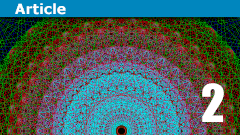
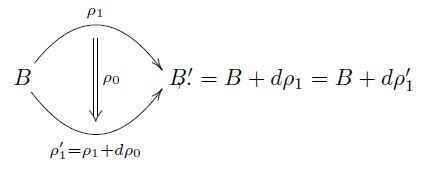
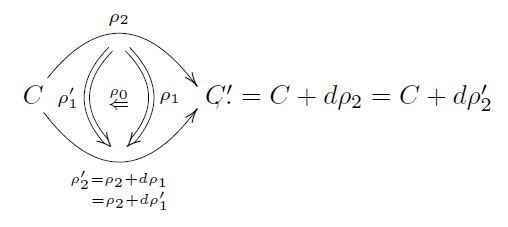
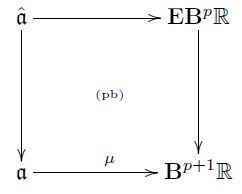
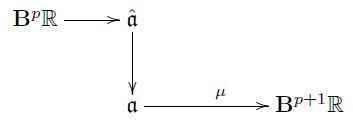
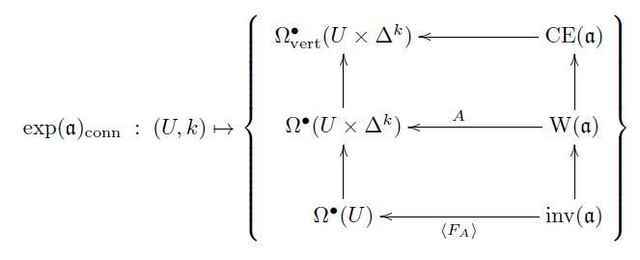
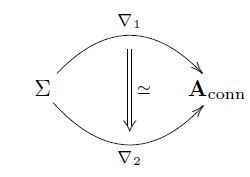
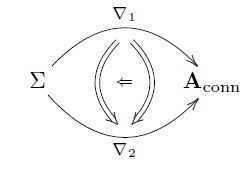
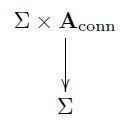

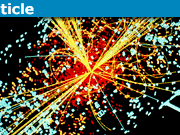
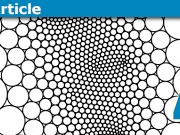

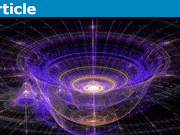
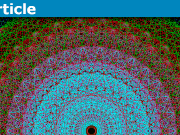
Thanks for the post! This is an automated courtesy bump. Sorry you aren’t generating responses at the moment. Do you have any further information, come to any new conclusions or is it possible to reword the post?